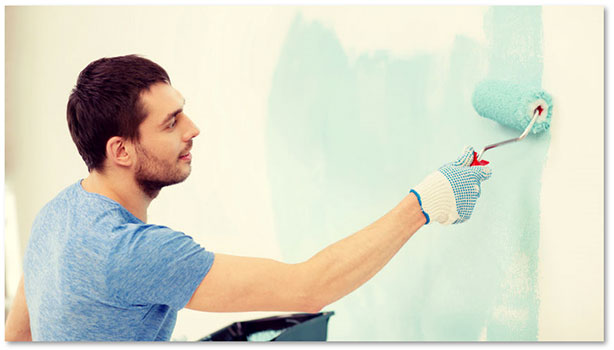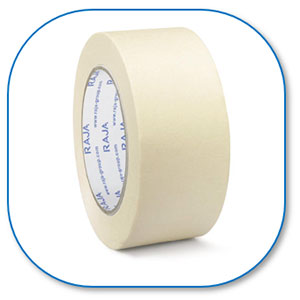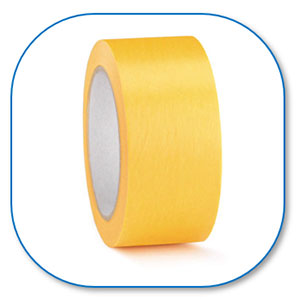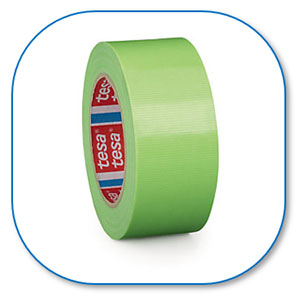What is indispensable when painting? First and foremost, paint and paint brushes… But equally important is painter’s tape. And there are lots of (colourful) varieties of these. Are all these tapes the same? Anything but! In this selection guide, we will guide you through some frequently used types and give tips on how to avoid paint creeping under the tape.
Which painter’s tape should I choose?
Let’s start with simple indoor painting jobs. Here, it is often enough to choose a white tape made of crepe paper. This is usually the cheapest variant and sticks for a few days.
For more professional and precise work, there is the yellow tape made of rice paper. The glue of this is more resistant to UV light so it hardens less quickly. As a result, the tape can stick longer without losing quality (and without leaving any glue residues). You also have less chance of paint creeping behind the tape. The result of all this is a tight delineation of all your paintwork.
And what if you now have to work outside? Through wind and weather? Then it is best to use the green tape made of polyethylene, a type of plastic.
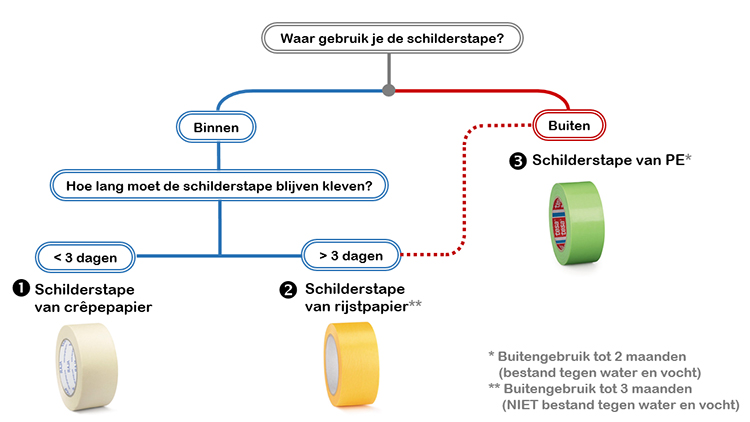
► 1. Painting tape made of crepe paper
]The big advantage of this masking tape is undoubtedly its price: it is the most economical variant. In fact, it is ideal for those who want to carry out simple painting jobs without having to consider a sophisticated finish. Remember: you can only use this tape indoors. It is best not to let it stick for more than 3 days. After that, the adhesive loses its sticking power.
- Flexible tape made of white crepe paper. With natural rubber adhesive (solvent).
- Suitable for masking off floors or walls, temporarily sealing boxes or bags, and so much more.
- View the Crepe paper masking tape of RAJA.
► 2. Painting tape made of rice paper
Rice paper tape is indispensable for the best indoor painting jobs . This painter’s tape is UV-resistant and very flexible. As a result, it prevents paint from creeping behind the tape like no other. For really straight painting lines, you should stop at rice paper. Besides indoors, you can also use this tape outdoors. Just remember that it is not water-resistant. It is best to use the green PE tape in damp or rainy places.
- Very thin and flexible tape made of yellow rice paper. With acrylic glue.
- For all paintwork indoors (up to 6 months) and outdoors (up to 3 months).
- View the rice paper masking tape.
► 3. Painting tape made of PE (polyethylene film)
]For those working outdoors, there is Tesa’s green painter’s tape. It is made of polyethylene, a kind of plastic film. That makes it both weather and water resistant. After sticking it on, it stays firmly in place for about 2 months. Within that time, you can easily remove it without leaving any glue traces. By the way, you can tear off this plastic tape both lengthwise and widthwise by hand. Very handy when you want to work quickly.
- Reinforced PE film with a thickness of 130 microns. With acrylic adhesive.
- Suitable for masking facades when painting, as floor marking, for attaching and bundling wires, etc.
- See here the masking tape for outdoor use From Tesa.
Painter's tape is always writable? So you can easily apply notes. That makes it handy for temporarily marking and labelling, for example, cabinets or furniture. You can even use the tape for labelling jars in the freezer.
What is the best way to use painter’s tape?
► How to use masking tape before painting?
- For precise and detailed painting, start by levelling the surface. On an uneven surface, you have a much higher risk of paint creeping behind the tape.
- Clean the surface before applying the tape. Avoid a surface that is too damp, greasy or dusty.
- Test the masking tape on an inconspicuous area first. That way you can be sure that the tape is suitable for that surface.
- Do not stretch the tape unnecessarily before applying it. This will prevent the tape from bulging and the paint from creeping under it.
- Use narrow tape (from 19 to 38 mm) for masking smaller elements (such as switches). Wider tape (of 50 or 70 mm) is a good solution for separating large colour areas.
- Preferably use long pieces of tape. That way you are more likely to paint straight lines.
- Masking tape has a lighter adhesive strength as standard. So press the tape well onto the surface before you start painting.
- Masking frames and borders is one thing. But you shouldn’t forget to cover larger surfaces too. A paint spatter on a bench or table is obviously not the idea. Fortunately, there are practical solutions such as furniture coversand masking sheets. Your floor is best covered with pieces of cardboard, such as these dividers.
► How do you use masking tape after painting?
- Are you working with crepe paper tape? If so, remove the painter’s tape shortly after applying the final layer of paint. If you leave the tape in place, the paint will penetrate the crepe paper. Consequence? You will no longer have a nice straight line after removing the tape.
- Removing the tape quickly will also prevent discolouration on your wall.
- Pull the tape away slowly and evenly lengthwise, preferably at a 45° angle.
